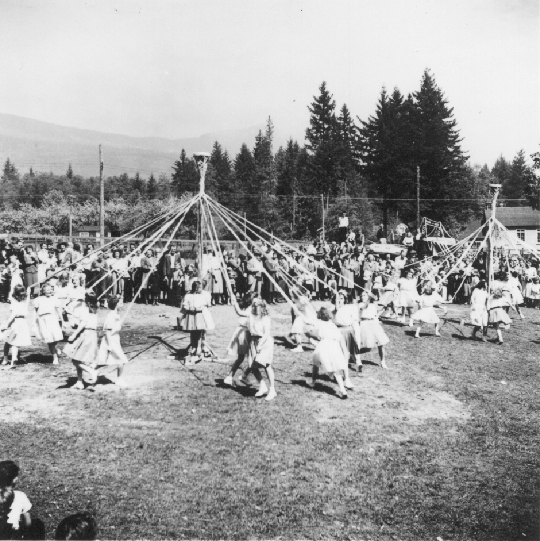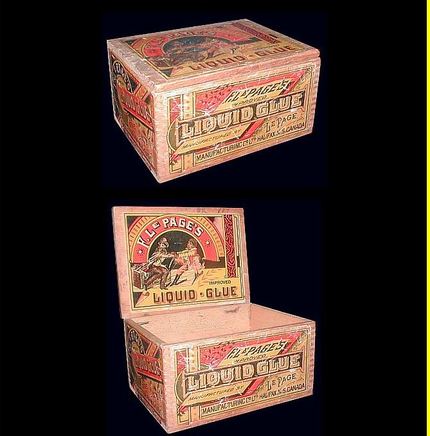The Sunshine Coast is a true cultural mosaic of settlers, each providing their own contribution to the social environment of this land. In the early 20th century, Finnish settlers came to the region; many from a failed commune on Malcolm Island in Georgia Straight. Others came directly from Finland. The decision to live on the Sunshine Coast was largely influenced by their philosophy of living off the land as Finnish Settler Wiljo Wiren said in a 1994 interview: “father was looking for land. He wanted to see if he could make a living off the land and that’s how he came to be here.” Many of the Finnish settlers moved to the settlement in upper Gibsons Landing shortly after the 1906 Madden fire. By 1914, there were approximately 14-18 Finnish families on the coast, about 100 people – a substantial portion of the total population of the Coast at the time!
We can see the hard-working, communal lifestyle of the Finnish in ventures like the Howe Sound Cooperative Canning Association, and farming developments along Henry Rd. A particularly atheistic group, they built two community halls where they would congregate for dramatic performances, songs, and more. The Finns welcomed members of other cultural groups into their halls, where inclusive community events would also take place. Notable differences that set the Finns apart as a cultural group on the Coast were their abstinence from alcohol, and their philosophy of living off the land.
The Finnish word “Sisu” does not translate directly into English, but can be loosely correlated with stoic determinism, persevering against unfavourable odds. It is a good way to describe the Finnish settlers, given a life of much migration and movement. We can still see the influence of their culture alive at events like the Pender Harbour May Day celebration, or in cooperative endeavors, like the Roberts Creek Farmer’s Market, or the Coast Car Co-op.
Fortuitously, a relative of Jake Hintsa, one of the original Finnish settlers, came by the Museum two weeks ago while I was working on this article. He shared a captivating tale of Vaino Maki, (also related to Jake Hintsa) who settled in Gibsons in the early 1920’s. If you would like to learn more, check out our revamped Finnish Settlers exhibit which will be launched at the end of the summer!
The Mysterious Fred Le Page and the Downfall of his Glue Factory
Adding to the mystery was several references to the Gibsons factory owner as Fred Le Page, nephew to the founder of the glue industry. When I contacted the great great granddaughter and historian of William Nelson LePage, the original founder of Le Page Glue, she replied that she owns one box of liquid glue labeled F. Le Page. However, seeing there were many copycats and frauds at the time as well as legal battles over ownership and rights, she had always gone under the assumption that F. Le Page was another fraud. After some searching she found that there was a nephew to William Le Page whose middle name was Fredrick and, although more investigation is needed, perhaps we have found the Gibsons' Le Page connected to the mysterious box of F. Le Page glue .
At the end of the day, there are still gaps in the secondary source accounts of who started and what ended the Le Page Glue Factory in Gibsons and we are left with an unexceptional piece of wood covered on one side in a thick layer of glue made from local dogfish livers. This being our only primary source evidence which, according to the description given in our archives, may be the last working trace of a glue factory mixing vat. The mystery of the Le Page glue factory remains...
-Kendra Fehr, Curatorial Assistant
References
Keller, B., & Leslie, R. M. (2009). Bright seas, pioneer spirits: A history of the sunshine coast.
Surrey, B.C.: TouchWood Editions.
Le page, V. (Ed.). (n.d.). ONE OF EARLIEST OF BIG ADVERTISERS - W.N. LE PAGE, WHOSE
FUNERAL WAS HELD TODAY, ONCE A CAPTAIN OF INDUSTRY. Retrieved November 6,
2014, from http://www.thecakelady.ca/lepagesglue/history2.html
Peterson, L. R. (1979). The Gibson's landing story. Toronto: PMA Books.
Wreckers Demolish Old Landmark. (1970, June 3). Coast News, p. 3.
Van Den Wyngaert, F. J. (1980). The west howe sound story. Gibson's Landing, B.C: F.J. Van den Wyngaert.



 RSS Feed
RSS Feed
